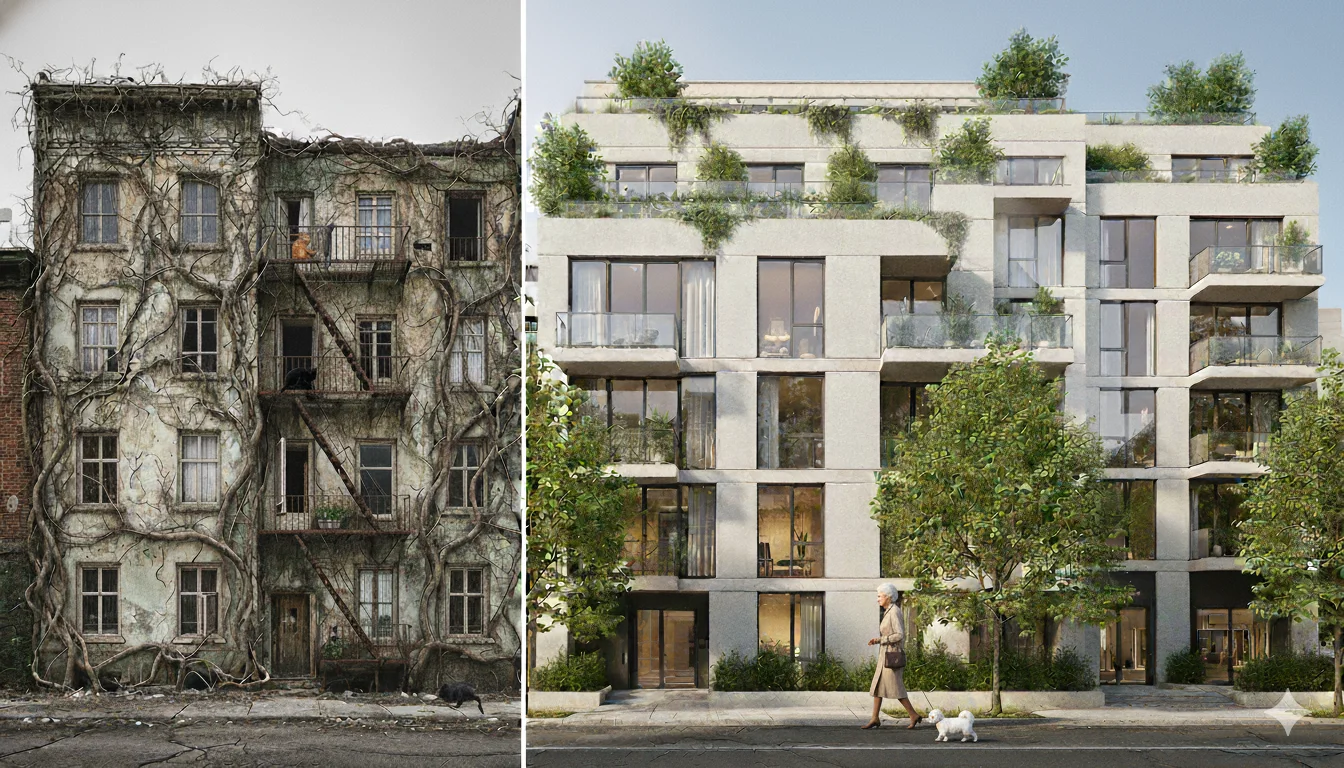Ukrainian housing market-2025: what DIM.RIA analytics reveals
Ukraine’s 2025 housing market flips familiar rules: 58 % of buyers choose the resale segment, price has risen by 40 %, and safe shelters and energy autonomy have become must-haves. We analysed DIM.RIA data, highlighted regional money flows and buyer fears.

After three years of full-scale war and continual shelling, Ukrainians are increasingly choosing ready-to-move-in apartments — avoiding construction risks and allowing immediate occupancy. According to DIM.RIA, 58 percent of active buyers now turn to the secondary market. The average budget is 40 percent higher than in 2021, reflecting not only inflation but also a rise in baseline comfort requirements.
Motivations have shifted as well: 44 percent aim to escape renting in favour of homeownership, while roughly one-third plan to relocate to safer or more economically stable regions.
The new “ideal apartment”
The 2025 buyer looks beyond square metres and metro access; a comprehensive “safety package” is almost mandatory:
- Price remains the primary filter (important to 88 percent of respondents).
- A shelter or safe room interests one in three buyers.
- Energy autonomy — from backup generators to solar panels — is desirable for 20 percent.
- A convenient floor level (typically 2nd – 8th) matters to 42 percent.
- Distance from military facilities concerns 27 percent.
Safe, energy-resilient homes therefore sell faster, even at a premium.
Where the money enters the market
- Kharkiv and frontline areas. The main buyers are IDPs using state certificates (eOselia, eVidnovlennia), seeking the cheapest secondary housing and demanding spotless paperwork.
- Western Ukraine (Ivano-Frankivsk, Lviv). Internally displaced persons and labour migrants earning in €/$ purchase new builds with shelters as long-term “brick-and-mortar” investments.
- Vinnytsia region. Agribusiness owners convert hryvnia into square metres — buying from developers and quickly reselling for foreign currency.
- Khmelnytskyi and parts of central Ukraine. Entrepreneurs from “frozen” businesses and military families invest in foundation-stage projects to turn capital swiftly, selling almost at cost.
- Kyiv and suburbs. Middle-income buyers increasingly target secondary units for renovation that already have generator hookups and underground parking-cum-shelters.
Four primary buyer fears
- Making a mistake — first purchase, unclear procedure.
- Missing the moment — “What if prices drop tomorrow?”
- Being rushed — limited budget or a relocation deadline.
- Getting lost in a new city — complete disorientation for IDPs.
Transparent information and expert guidance — not discounts — address most of these anxieties.
Market expectations are high: one in four Ukrainians believes that prices will surge immediately after peace is reached, and a further 18 percent foresee a construction boom in cities. A more restrained scenario is likely: a shortage of safe housing will uphold prices, but real growth will still hinge on purchasing power.
*The DIM.RIA report was presented at the XXVIII International Real Estate Conference in Lviv, June 2025.
Last News
How Odesa is shaping its Development Strategy until 2027, why housing renovation is a priority, and how DOMOVA contributes to urban recovery.
Ukraine’s housing deficit has reached a historic scale — millions of apartments lost, and new construction covers less than 1 % of needs. Yet within this crisis lies opportunity: old buildings can become a new foundation for recovery through collective action and investment.
We’re executing the Seeds of Bravery grant and have received the Seal of Excellence. This post shares product progress and the impact on scaling.


